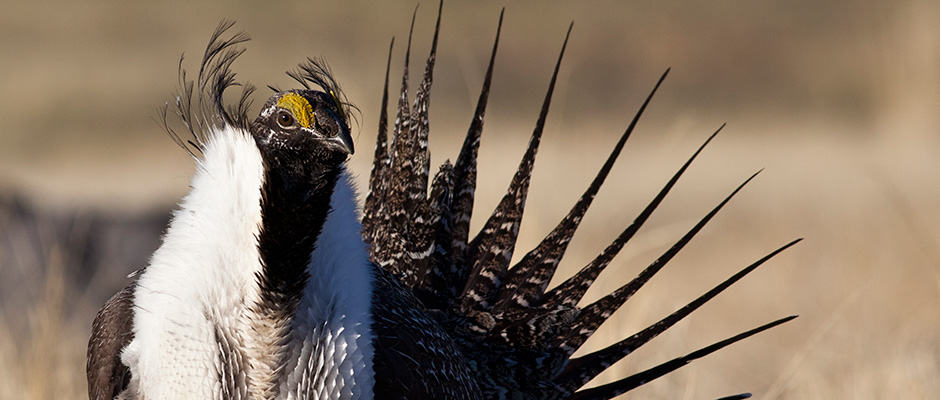Share this article
Voluntary Conservation Efforts Lead to Species Successes
Amid legislation targeting the finalized listing of vulnerable sage-grouse and reports of falling population numbers in other Western States, voluntary conservation efforts have led to successes for the distinct California-Nevada population of Sage-Grouse.
The U.S. Fish and Wildlife Service (FWS) withdrew its proposal to list the population as threatened under the Endangered Species Act.
Sally Jewell, Secretary of the Interior, praised the conservation partnerships which facilitated the development of a 15-year Bi-State Action Plan. The comprehensive plan, which identifies 80 projects to reduce threats to and protect sagebrush-steppe habitat, was developed by the Bi-State Local Area Working Group, composed of a diverse set of partner groups including Federal agencies, such as the FWS, Bureau of Land Management, Natural Resource Conservation Service, and Forest Service, as well as state agencies from both California and Nevada, nonprofit and nongovernmental stakeholder groups, private landowners, and ranchers.
The development of the plan was a key factor in the withdrawal of the proposed sage-grouse listing. The Natural Resource Conservation Service’s (NRCS) Sage-Grouse Initiative worked directly with landowners to enroll 7,300 acres of priority habitat as easements into conservation programs.
Robert Bonnie, Under Secretary of Agriculture for Natural Resources, praised the collaborative efforts.
“As you know, sage-grouse don’t recognize our borders. They fly and walk across public and private lands as one landscape,” Bonnie stated in the USDA blog. “[A]nd it’s important we have come together to put aside those ‘borders’ and focus on getting the job done across public and private lands – voluntarily.”
The FWS is still working to conduct status reviews of sage-grouse populations throughout the entirety of its range. A final determination regarding whether the species warrants protection is due in September, 2015.
Source: Department of the Interior News Release (April 21, 2015)
Header Image: Image credit: USDA








